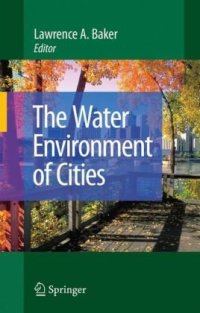
Ebook: The water environment of cities
- Genre: Biology // Ecology
- Tags: Environmental Management, Landscape/Regional and Urban Planning, Waste Water Technology / Water Pollution Control / Water Management / Aquatic Pollution, Environmental Law/Policy/Ecojustice, Civil Engineering, Landscape Ecology
- Year: 2009
- Publisher: Springer US
- City: New York
- Edition: 1
- Language: English
- pdf
For much of the first 200 years of industrialization, the urban water environment was developed by trial and error, often with unintended consequences. The modern "water closet" became widely used; public officials realized that sewers were needed, epidemics of cholera and typhoid were rampart, and eventually, the Cuyahoga River in Ohio literally caught fire. Along the way, we developed new science, new technology, and new institutions. Will we do better in the future? Can we do better in the developing world? This central premise of this book is that we can, if we plan the urban water environment holistically.
The Water Environment of Cities is the first book to develop this holistic vision. To accomplish this, core chapters are written by leading experts in academia, consulting, and government. It is written for the broad audience of urban water managers: engineers, planners, ecologists, hydrologists, social scientists, and others. Chapters are written to be accessible to students and practitioners across disciplines, each incorporates cross-cutting themes, and the book is supported by a glossary. Chapters examine urban water budgets, groundwater management, urban water infrastructure, the movement of pollutants through urban systems, management of urban streams, integration of water into planning design, urban water recreation, the legal framework for urban water management, institutions to manage urban water, and the economics of water supply. Importantly, after writing their core chapters, chapter authors participated in an NSF-funded synthesis workshop to integrate concepts throughout the book. The result is a unique synthesis chapter that outlines five core principles for managing the urban water environment in the 21st century.
Urbanization of the Earth’s population will have increased the Earth’s urban population from less than one billion in 1950 to five billion by 2030. Managing water for this burgeoning urban population is one of the critical needs for humanity. This book uses a holistic, interdisciplinary approach to examine the urban water environment. Water has multiple roles: municipal water supply, aquatic habitat, landscape aesthetics and recreation. Increasingly, urban water is reused, serving multiple purposes. Humans alter the urban hydrologic cycle and the chemical and physical integrity of urban water systems and resources. Some of those changes are beneficial, and others harmful. Understanding those changes and impacts requires expertise and perspective from a wide range of disciplines. Chapter authors represent this diversity of expertise, with expertise in surface and groundwater hydrology, civil and environmental engineering, environmental policy, urban planning, law, geomorphology, and recreation management.